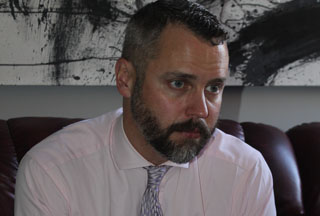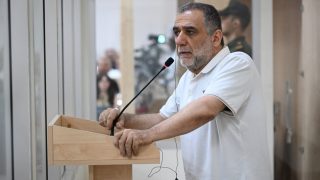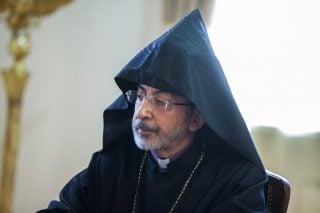
Laurence Broers: None of the parties of the Karabakh conflict has peace strategy

Laurence Broers: Programme Associate at “Conciliation Resources” in London, answered to our several questions
– Mr Broers, we had some tension in the Line of Contact of Nagorno-Karabakh and Azerbaijan again, an incident: there was another sabotage on the 20-th of January by azerbaijani forces, and one armenian soldier was killed. What is your assesment to this?
– Ceasefire violations are a favourite way to keep the conflict on the agenda, to keep it in the public eye. So there is a kind of “multivocal signaling” that goes on – for the international community it is a new phase in the peace process, this affirms the status and legitimacy of the presidents of Armenia and Azerbaijan in the international diplomatic community. But for domestic audiences the conflict, and a sense of threat, needs to be kept alive, and these kinds of incidents are a preferred way of doing that. Over the last couple of years, the Line of Contact has increasingly become ‘centre stage’, a constant, festering source of bad news and tension – overshadowing for domestic audiences whatever is happening in the peace process.
– The foreign minister of Armenia Edward Nalbandian commented this during his conference, underlining, that this kind of acts by Azerbaijan have an aim to bother the negotiation process, but he also added that we have to continue to negotiate, because “the negotiation doesn’t have an alternative”. Do you think this is a correct policy?
– Of course, it creates a different and negative atmosphere for the negotiations – but I don’t see an alternative for Armenia but to continue to negotiate. What I think can be stepped up is international pressure and lobbying for more monitoring infrastructure in the Line of Contact area. This is very important in terms of managing possible escalation. Misperception and misunderstood behaviour by the other party is very dangerous in a context like the Line of Contact, this is why hotlines, early warning systems and incident investigation are needed. Lobbying and pressure for this needs also needs to come from Armenian and Azerbaijani societies, who are the principal victims of this situation, both in terms of providing soldiers and living in a state of permanent insecurity.
– What can help to stop or weaken Azerbaijan’s agression, shooting on the border, etc.?
– If you look at it from an Azerbaijani perspective, these incidents are one of the main ways that Azerbaijan has to challenge the status quo, and to keep the conflict on the international agenda. So there is a kind of rationality to it, for the party that is unhappy with the status quo and doesn’t see alternatives for changing the situation in other ways. One approach to transforming this situation could be to look at ways to introduce experimental confidence building measures along the de jure border between Armenia and Azerbaijan. Of course this has also been a problem area, with incidents and casualties. But there can be scope to demonstrate the benefits for both parties in this context, which is not quite as politicized as the de facto border.
If measures could be introduced that would demonstrate positive effects of cooperation, this can be a step towards breaking down the total mistrust and cynicism that surrounds the current way in which the Line of Contact is managed.
– You said that “ceasefire violations are a favourite way to keep the conflict on the agenda”, which helps both the Armenian and the Azerbaijani authorities to affirm their legitimacy. But i should notice and underline that ceasfire violations and subversive acts mostly come from Azerbaijan, not from the Armenian side, so Azerbaijan is victim of killing people on the Line of Contact. Don’t you think that Armenian and Azerbaijani sides aren’t equal in this sense?
– I understand what you mean, but the only way to really prove this point is for the Armenian side to take unilateral action, for example by withdrawing snipers in a given area. There have also been numerous Azerbaijani civilian casualties over recent years, and I think there may be wishful thinking in wanting to see the problems around the LOC as all Azerbaijan’s fault.
I know that Armenian audiences don’t like to hear this, but continued occupation is also an affirmation of the use of force. All sides in this conflict are still principally invested in a military strategy – no one has a peace strategy. But actually all sides need both: an effective security strategy (to provide basic security for both Armenian and Azerbaijani citizens) and a peace strategy to transform their relations.
Interviewed by Aram Sargsyan























